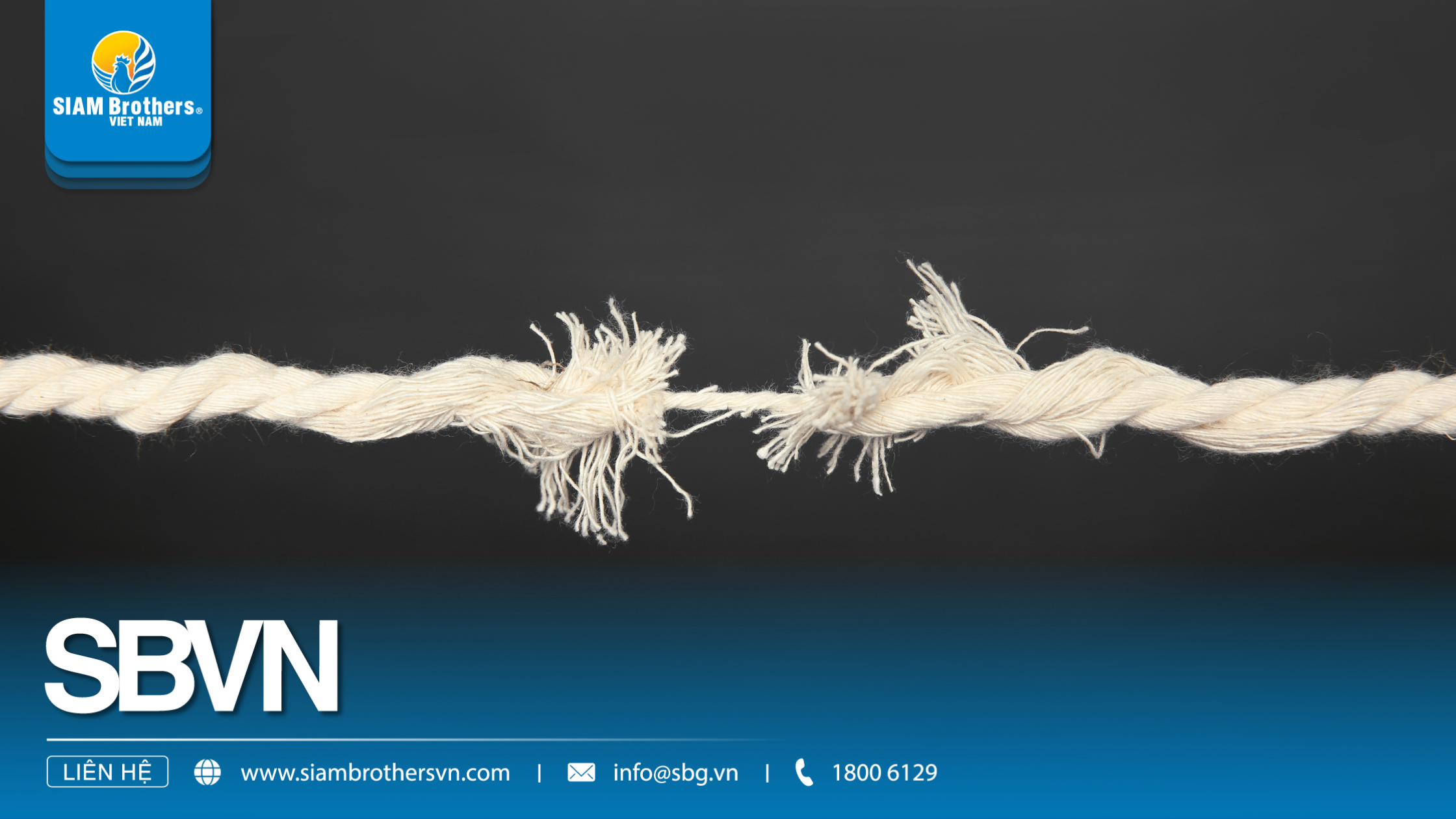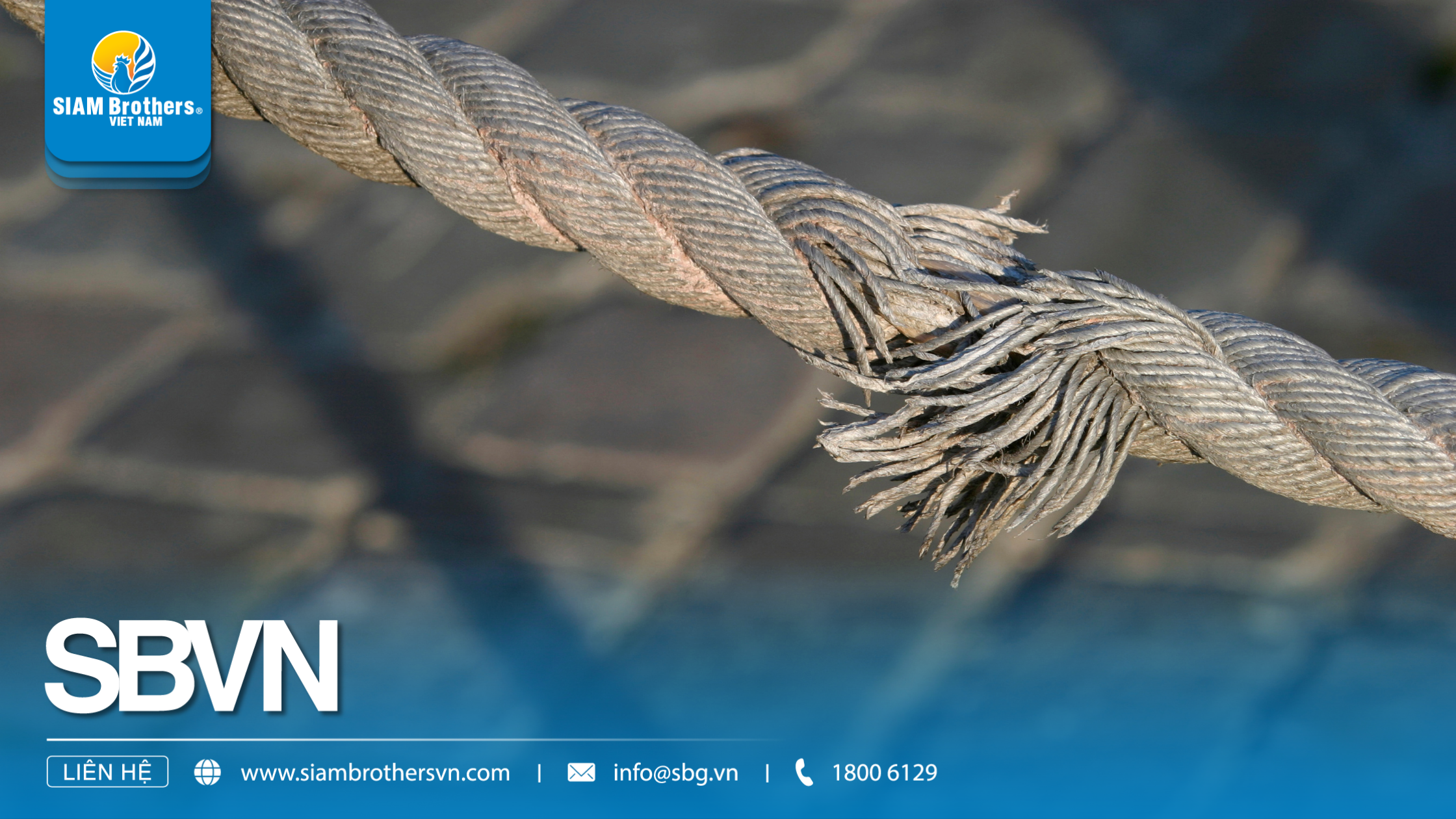Broken rope during use? Whether you're offshore fishing, securing cargo, or working in agriculture — a broken rope can cause serious disruptions if not addressed promptly and properly. So, how can you reconnect ropes safely, securely, and without interrupting your operations? In this article, SIAM Brothers Vietnam shares quick, efficient, and cost-effective repair methods — along with smart rope selection tips to help minimize the risk of breakage from the start.
Have you ever experienced a broken rope in the middle of a job? This is a widespread issue across industries such as marine, agriculture, and logistics. A snapped rope not only disrupts operations but can also lead to property damage and safety hazards. Let’s take a look at why this has become a shared concern for many users:
Common Scenarios When a Rope Breaks
During transportation or cargo securing: A broken rope can lead to instability, product damage, and increased replacement costs.
Causes: Choosing the wrong type of rope, improper storage, and harsh environmental factors like UV exposure, saltwater, or chemicals all contribute to rope breakage.
Tip from SIAM Brothers VN: When dealing with a broken rope, act fast — but always prioritize safety and durability.


Step-by-Step Guide to Repairing a Broken Rope
Key Tips for Handling a Broken Rope Effectively
Never reuse broken ropes or improperly repaired ones in high-load or safety-critical tasks.

Yes, you can — provided you use the correct repair methods and tools. However, for severely damaged or critical ropes, replacing them is often the safer choice.
Synthetic ropes such as Polypropylene and Nylon are generally stronger and more resistant to harsh environments than natural fiber ropes. Choosing the right type of rope for your specific use is crucial to prevent breakage.
Store ropes in dry, well-ventilated areas away from direct sunlight, moisture, and chemicals. Regular inspection and cleaning also help prolong rope life and durability.
Replace your rope if it breaks repeatedly, shows significant wear at joints, or the splice is no longer secure. Safety and work efficiency should always come first.
While it may seem minor, a broken rope can lead to serious delays and unexpected costs if not handled correctly. Understanding the root causes, applying proper repair techniques, and selecting the right type of rope are key to ensuring safety and efficiency — whether you're in fishing, agriculture, transportation, or construction.
Need a Reliable Rope Replacement?
Don’t let small issues slow you down. If you're unsure about which rope to choose, contact SIAM Brothers Vietnam — a leading manufacturer and distributor of high-durability ropes in Vietnam.
Visit siambrothersvn.com or call us today to get expert support and the best rope solution for your needs.

Source: SIAM Brothers Vietnam
Contact us:
Address: 5th floor, VRG Building, 177 Hai Ba Trung Street., Vo Thi Sau Ward, District. 12, Ho Chi Minh City, Vietnam
Tel: (+84) 28 38 912 889
Hotline: 1800 6129
Facebook: www.facebook.com/siambrothersvn
Email: info@sbg.vn
YouTube: youtube.com/@siambrothersvietnam1728
OA Zalo: zalo.me/1402339229697925373
App SBVN ID:
CHPlay: https://bit.ly/SBVNID-Android
Appstore: https://bit.ly/SBVNID-iOS
